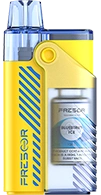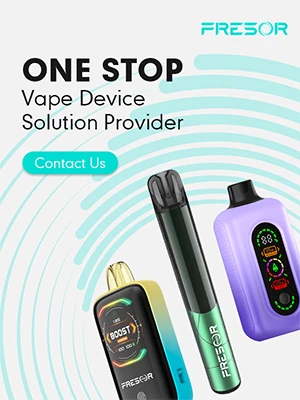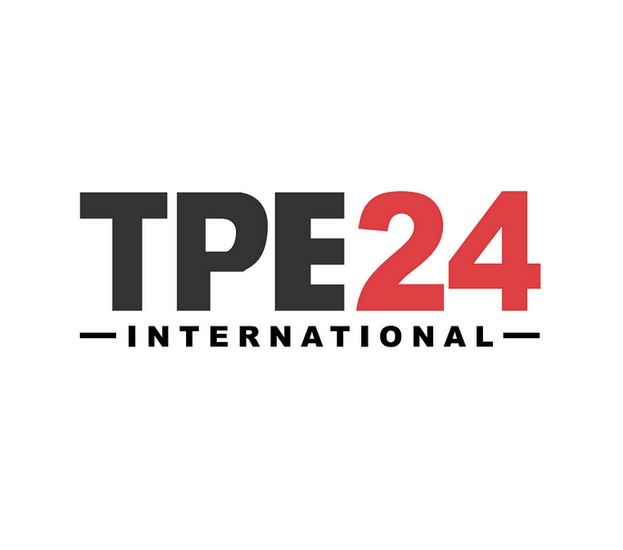Italian Vaping Landscape: Restrictions and Realities

15 August 2023

1. Introduction
Vaping has taken the world by storm in recent years, captivating smokers and non-smokers alike with its promise of a safer alternative to traditional cigarettes. From the bustling streets of New York City to quaint cafes in Paris, the sight of billowing clouds from e-cigarettes has become commonplace. However, while vaping enthusiasts may rejoice at the growing acceptance worldwide, it is crucial to examine how different countries approach this phenomenon. In this article, we focus on Italy – a country known for its rich culture and love for all things indulgent – where vaping regulations have been put into place to both protect public health and navigate the complex realities of this rapidly expanding industry. Join us as we explore Italy's vaping landscape, uncovering the restrictions that exist alongside the emerging opportunities.
2. Background of Vaping in Italy
The vaping culture in Italy has witnessed a notable rise over the past decade, reflecting a global trend. The allure of vaping, often marketed as a safer alternative to traditional smoking, has attracted many Italians, particularly among the younger demographic. This cultural shift is evident in the proliferation of vape shops, an increase in vaping-related events, and the growing presence of vaping influencers on social media platforms.
However, this surge in vaping has also sparked concerns, particularly regarding youth engagement and health implications. The accessibility and appealing flavors of vaping products have raised alarms about their attractiveness to minors, prompting worries about the normalization of nicotine use among the underage population. Additionally, health experts have voiced apprehensions about the long-term effects of vaping on respiratory health and its potential to act as a gateway to smoking traditional cigarettes.
Italian authorities have responded to these concerns by implementing regulations to curb youth vaping and addressing health worries. Stricter age verification measures for purchasing vaping products, limitations on advertising targeting young audiences, and regulations on e-liquid ingredients are some steps taken to mitigate these issues. As the Italian vaping landscape evolves, finding a balance between personal choice and public health remains a pivotal challenge.
3. Current Regulations on Vaping in Italy
In Italy, vaping is subject to regulations that address various aspects of its use and potential impact. These regulations encompass age restrictions, advertising constraints, packaging guidelines, and nicotine concentration limitations.
- Age restrictions and purchasing regulations: To prevent the sale of vaping products to minors, Italy enforces a legal age restriction on purchasing and consuming such products. The sale of vaping products is illegal to individuals under the age of 18. Vendors must implement stringent age verification processes to ensure compliance with this regulation.
- Advertising and marketing restrictions: The advertising and marketing of vaping products are subject to limitations to curb their appeal to younger audiences. Any form of advertising that might be attractive to minors is prohibited. Additionally, using testimonials, health claims, and misleading information in marketing materials is closely regulated.
- Packaging and labeling requirements: Vaping product packaging must adhere to specific guidelines, including clear warnings about nicotine content and potential health risks. The labels should be informative and conspicuous, conveying the potential harm of vaping and nicotine consumption.
- Nicotine concentration limitations: There are restrictions on nicotine concentration in vaping liquids. The maximum allowable nicotine concentration is capped to ensure that the products are not excessively potent and to mitigate the risk of nicotine addiction, especially among inexperienced users.
These regulations collectively work towards striking a balance between facilitating adult access to vaping products while safeguarding youth and public health. Adherence to these regulations is crucial for both vendors and consumers to ensure responsible vaping practices within the Italian context.
4. Recent Developments in Vape Regulations
Recent changes in Italy's vaping regulations reflect a nuanced approach to the evolving landscape of e-cigarettes. Notably, vaping products are now banned in areas where traditional tobacco smoking is prohibited. It aligns with Italy's public health objectives and aims to curb tobacco and e-cigarette emissions exposure. Furthermore, advertising restrictions have been tightened to discourage youth engagement.
The European Union's Tobacco Products Directive (TPD) has exerted substantial influence on Italy's vaping regulations. This directive has led to standardized measures such as nicotine concentration limits and packaging requirements. Italy's response reflects a commitment to aligning its policies with EU standards to ensure product safety and consistency.
Comparing Italy's regulations with neighboring countries reveals diverse strategies. France has embraced stringent measures, Spain maintains a more permissive stance, while Germany's approach varies by region. Switzerland integrates e-cigarettes into existing tobacco laws.
Italy's recent vaping regulations exemplify a balance between harm reduction and health concerns. Harmonization with the TPD underscores collaboration within the EU, while regional comparisons emphasize the complexity of finding a unified approach across borders.
5. Implementation and Enforcement
The oversight and implementation of vaping regulations in Italy involve multiple government bodies. The Italian Ministry of Health plays a central role in formulating and supervising these regulations. It collaborates with other relevant agencies, such as the Italian Medicines Agency (AIFA), the State Police, and the Revenue Agency, to ensure comprehensive enforcement.
Non-compliance with vaping regulations can result in penalties for both retailers and individuals. Retailers found selling vaping products to minors or violating advertising restrictions can face fines, license suspension, or even criminal charges. Individuals caught purchasing vaping products for children or using them in prohibited areas may also face fines.
The effectiveness of enforcement efforts faces a mix of successes and challenges. While regulations have helped curb underage access to vaping products and curb misleading advertising, some areas of enforcement remain challenging due to the online sale of products and the difficulty in verifying age. Additionally, the evolving landscape of vaping products, including new variations and flavors, can create difficulties in keeping regulations up-to-date.
Striking the right balance between regulation and personal freedom while adapting to emerging vaping trends remains an ongoing challenge for Italian authorities. Efforts to stay updated, collaborate across agencies, and educate the public about the importance of compliance are essential components of effective enforcement.
6. Impact of Restrictions
The restrictions imposed on vaping in Italy have yielded positive outcomes, notably reducing youth vaping rates. Stricter age verification and marketing regulations have contributed to limiting access to vaping products among minors. It has helped to deter the initiation of vaping among young individuals, addressing concerns about the normalization of nicotine use and potential health risks associated with early exposure.
However, the regulations also have potentially negative consequences, particularly concerning smokers attempting to quit. Vaping has been promoted as a harm-reduction tool for smokers transitioning from traditional cigarettes. Restrictive measures, such as limitations on nicotine concentrations or flavors, might inadvertently hinder adult smokers' access to less harmful alternatives, potentially impeding their quitting efforts.
Public opinion and debates surrounding the regulations reflect a complex interplay of health concerns, personal freedom, and economic interests. Some view the rules as necessary for safeguarding public health and preventing youth addiction, while others argue that adults should have the autonomy to choose harm-reduction alternatives. Debates often revolve around striking the right balance between protecting the younger generation and offering viable alternatives to traditional smoking. As scientific evidence and societal attitudes evolve, ongoing discussions shape the trajectory of vaping regulations in Italy.
7. International Comparisons
Italy's vaping regulations exhibit both similarities and differences when compared to regulations in other countries. For instance, like many countries, Italy imposes age restrictions on purchasing vaping products and restricts advertising that could appeal to minors. Similarly, nicotine concentration limits exist in various nations, including Italy, to mitigate potential health risks.
Different approaches to vaping regulations offer valuable lessons. Countries like the United Kingdom have embraced harm reduction by endorsing e-cigarettes as smoking cessation aids, yielding positive results in reducing smoking rates. This approach emphasizes education and accurate information dissemination. On the other hand, overly stringent regulations, such as Australia's prescription-only policy for nicotine e-cigarettes, may hinder access for adult smokers seeking alternatives.
In learning from these approaches, policymakers can prioritize informed decision-making, balancing accessible harm-reduction tools and safeguards against underage usage. Flexibility in regulations and a focus on evidence-based policymaking are crucial. International comparisons illuminate the potential benefits of tailored regulations that prioritize public health while recognizing the diverse needs of smokers and potential quitters.
8. Future Developments
Future developments in Italy's vaping regulations could involve amendments to enhance their effectiveness. Stricter enforcement mechanisms, including online sales monitoring and improved age verification technologies, may be implemented to address evolving challenges in preventing underage access. Additionally, regulations might adapt to include emerging concerns, such as the long-term health effects of vaping, potentially leading to more comprehensive product testing and ingredient disclosure requirements.
The direction of vaping regulations in Italy is to continue prioritizing youth protection and public health while considering harm reduction for adult smokers. Collaborative efforts among health authorities, industry stakeholders, and advocacy groups could lead to refined regulations that balance curbing youth vaping and offering viable alternatives to traditional smoking. As the scientific understanding of vaping evolves, regulations might evolve as well, reflecting emerging evidence on health impacts and usage patterns. Overall, Italy's vaping regulations are likely to navigate a path that aims to minimize risks while acknowledging the potential benefits of harm reduction strategies.
Improve Your Vape Brand with TOP Vape OEM/ODM Manufacturer
ALD Vapor, a global leader in vaping industry, is professional in providing one-stop OEM/ODM atomization solutions for vape brands from all over the world since 2009. With over 14 years of experience, over 4000 workers, and 6 factory sites, the company has gained a great reputation among clients and a fast-growing market share.
Conclusion
The Italian vaping landscape reflects a growing global trend with its own set of regulations and challenges. The rise of vaping culture, driven by accessibility and appealing flavors, has raised concerns about youth engagement and potential health implications. Current regulations encompass age restrictions, advertising limitations, packaging requirements, and nicotine concentration caps.
Striking a balance between health concerns and personal choices remains pivotal. While regulations have succeeded in reducing youth vaping rates and promoting responsible practices, they also pose potential challenges for adult smokers seeking harm reduction alternatives. International comparisons highlight the importance of tailored approaches that consider harm reduction, accurate information dissemination, and accessibility. As Italy's vaping regulations continue to evolve, it is crucial to foster ongoing discussions, leveraging scientific evidence and public input to ensure a nuanced and effective regulatory framework that safeguards public health while respecting individual autonomy.

























